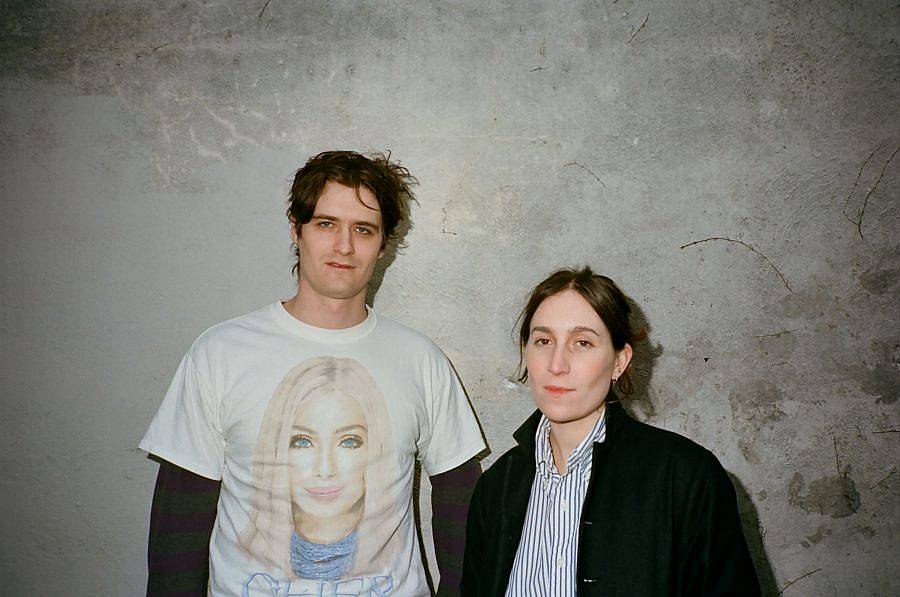Tell us a bit about Art Lot and what you do!
LM: Art Lot is a 16’x81’, empty, gravel lot in Red Hook, Brooklyn, which has been functioning as an outdoor artist-run space for three decades. The space is visible from the sidewalk 24/7, encouraging artists to explore ideas in a unique public setting. As directors of the space, Jacob and I primarily program and organize exhibitions. During our tenure, we have also taken on some other initiatives, like designing a new visual identity, developing a website, and building a centralized archive of past shows.
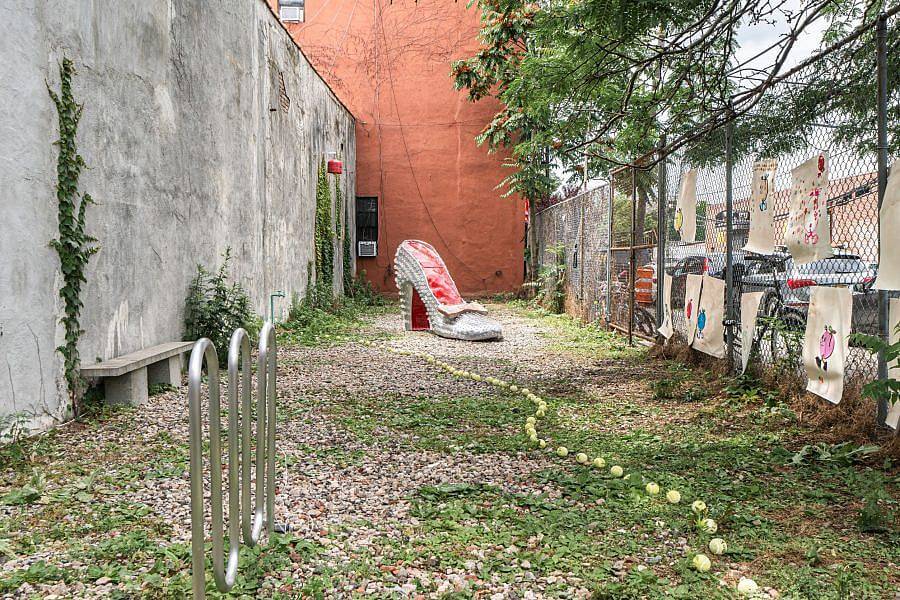
What’s the origin story, and who owns the lot?
JJ: The lot was purchased at auction from the city in 1990 by Jim and Bobbi Vaughan, a couple who own a few properties in the area. Soon after, they offered the space to their friend and local artist, Ursula Clark, to curate shows. Since then, the space has run continuously, and operational duties have been passed on informally. Seven artists have been tasked with running Art Lot so far.

What are your backgrounds?
LM: I am an artist with a sculpture practice. In my work I mine high and low cultural references for use as material, transforming contemporary and historical icons, images and objects into mutant forms. I embrace humor and play in my work… I think people take art too seriously. Jacob and I met at The Cooper Union, where we both attended school.
JJ: I’m also primarily an artist and have always been interested in alternative art spaces. I make sculptures and paintings. Most recently I have been developing a project revolving around discarded mold fragments sourced from a factory in rural Wisconsin that produces novelty fiberglass sculptures and fixtures for playgrounds and amusement parks.
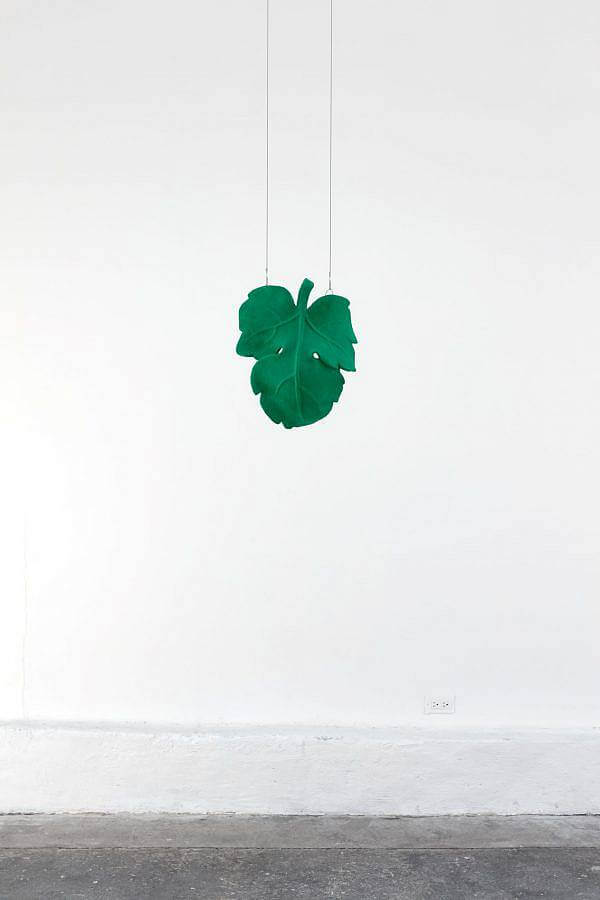
How did each of you get introduced to the space, and how did you end up being directors?
JJ: I was aware of Art Lot for a number of years through mutual acquaintances, but knew very little about it until Lina and I began developing a show of our own work for the space in 2021. Aimee Burg and Natalia Zubko, who ran Art Lot then, hosted our show, “(At) The End (of a Rainbow),” in 2022. Through that process, we became more keyed into the Lot’s unique history and how it functions. A few months after the closing of our show, Aimee floated the idea of us taking the reins and we enthusiastically accepted.
LM: As it would happen, I grew up a few blocks away from Art Lot – I have been familiar with the space for a long time. I remember walking by shows at the Lot when I was a kid, so it felt very serendipitous (and somewhat cosmic!) to have the opportunity to take over the space with Jacob, two decades later.
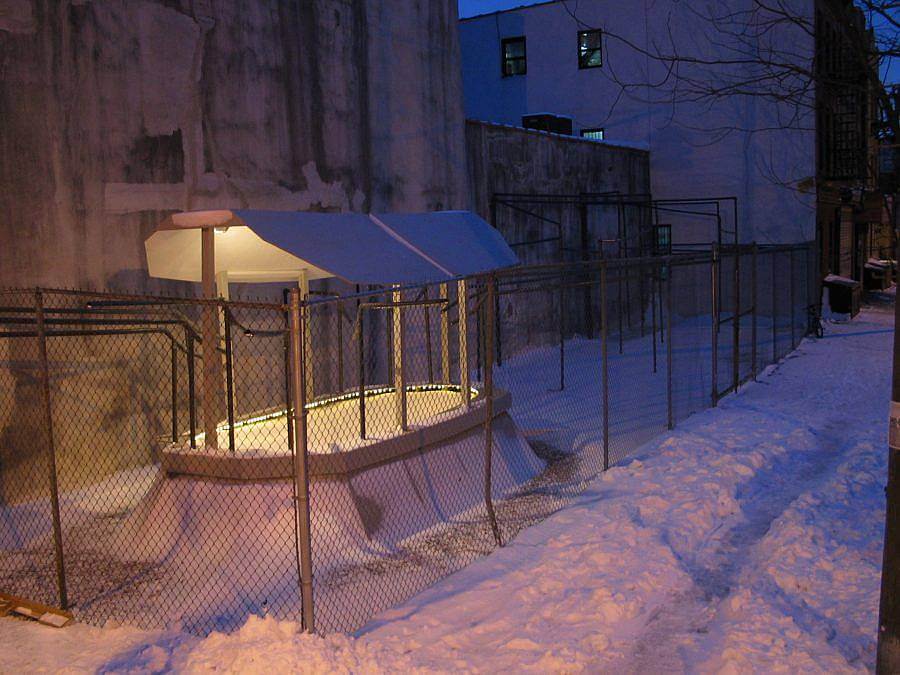
What considerations do you have for programming in the lot, and how much does its 24/7 visibility from the sidewalk affect that?
LM: As a space that functions completely off the grid, there are many logistical challenges that we have to consider when programming including time, weather, light, and access to resources like plumbing and electricity. We saw our first year of programming as an experiment—testing the limits of the Lot, as well as embracing the inherent failures that come with these restraints. This next year of programming will be mostly focused on individual artist projects that are in conversation with the Lot’s architecture, history, and relationship to the neighborhood. The Lot’s 24/7 visibility from the sidewalk is a very big consideration of ours as we explore notions of public art, monuments, and public space.
JJ: The space uniquely straddles the line between public and private—enclosed yet visible to the outside world, it evades the strict bureaucratic parameters of public art. This buffer allows for a rare kind of freedom.
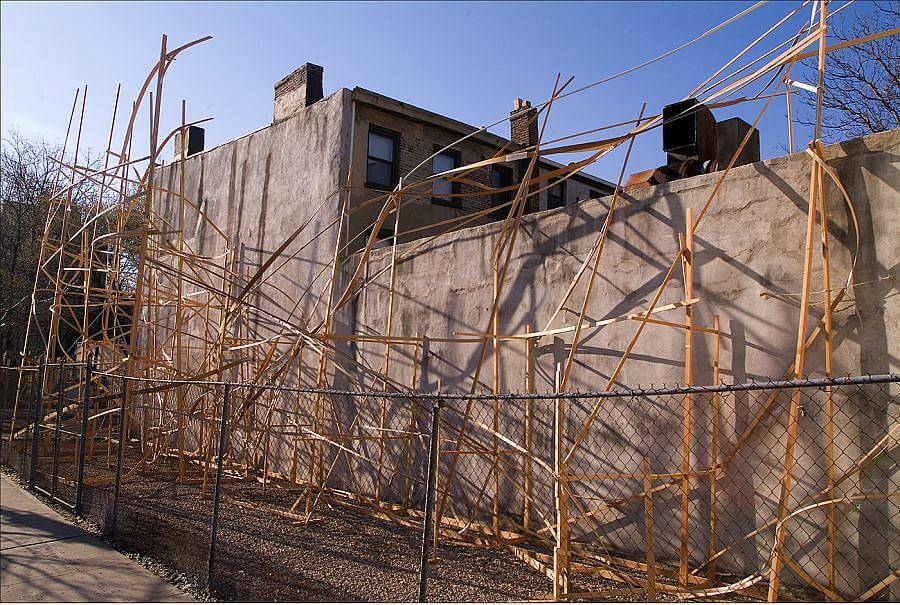
You’ve mentioned that there is an effort to build up an archive of the space’s programming over the past couple of decades; how has that been going and are there any surprises you have found while working on it?
JJ: It’s going well! Art Lot has never had a centralized storage system for show documentation and materials, so much of its history has been lost or misplaced as the Lot has changed hands over the years. One of our main goals has been to uncover and archive that history. Our process has mostly involved reaching out to past artists and curators and digging through old websites and blogs. Thank you, Wayback Machine! The beauty of the space is that it has run for more than 3 decades without a conventional infrastructure, but I think that making the history more accessible is important. We are still trying to work out how to formalize certain aspects of the project without forfeiting its loose and experimental spirit. To me, the most surprising thing is the fact that we are constantly meeting or hearing about artists who have shown work at Art Lot that we didn’t know anything about. Somehow the space is always unfolding and revealing more.
LM: Quite literally unfolding and revealing… one can find pieces of Art Lot’s history hiding in the space itself— fragments of old sculptures and hardware from past shows. It’s always fun to discover remnants here and there, like an archeological dig. While at a party once, I was talking to an artist who told me he cast a piece of Art Lot’s gravel in bronze for a show, years ago. We’re still looking for that bronze rock…
How do you think the space has lasted as long as it has?
LM: It’s pretty wild… and very moving! Something so unstructured can only exist in this city for 30+ years if there is an avid necessity for it. It’s an ongoing, shared belief in public art, a strong desire among artists to broaden accessibility within the contemporary art world, and of course, the community’s support that has kept Art Lot going for all this time. Not to mention the decades of mutual generosity between artists, curators, and most of all, the owners of the lot, Jim and Bobbi. The space has consistently operated on the time and resources of artists alone.

It feels like there has been a surge of interest in non-traditional spaces recently – do you have any thoughts as to what might be behind that?
JJ: During the lockdown there were many virtual, outdoor, and temporary shows that emerged from the precarity, uncertainty, idle time, etc. I think that moment really broadened our understanding of what was possible and renewed an appreciation for more experimental exhibition models. Also, there are fewer barriers to entry for running an art space than there have ever been with the increasing accessibility of technology and so much coverage on online platforms. In contrast, rising city rents have caused people to naturally push the boundaries of what can be considered a “gallery.” I think as artists, we are confronted by many harsh realities about the “traditional” art world and collectively yearn for something more open and equitable. I hope we’re moving in that direction.
LM: While all of this is true, it’s not anything new. New York City has a long history of alternative art spaces dating back to the 1960s. We definitely keep that legacy in mind.
Any predictions for 2023?
JJ: We’re dropping a tote bag.

Have you ever had any issues with the city or county in regards to the programming in the space, or has that occurred in the history of the space?
LM: In our short tenure at the Lot, no one has questioned what we are doing in the space. In fact, our neighbors have been nothing but supportive! Big thanks to Mazzat, the restaurant next door, which has been very generous to us and has become our favorite spot for a post-opening meal. The neighborhood’s trust, and the freedom that comes with that, is what makes the Lot a very special place!
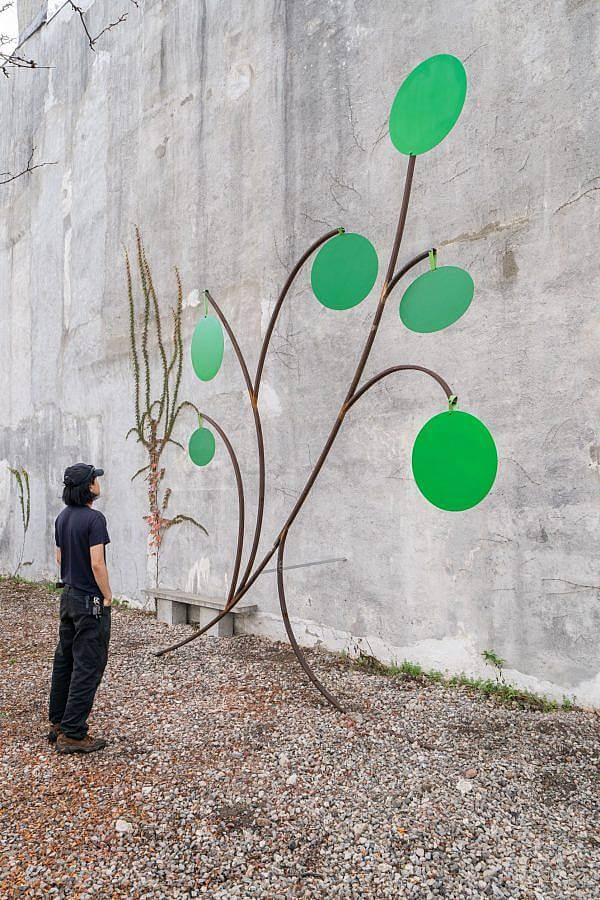
Do you have any upcoming events/projects you’re excited about?
LM: Our next show will be a solo-presentation by Eva Robarts. The show will open mid-March. We are very excited about it and hope to see you there!
Interview conducted by Milo Christie
